An air compressor can be a powerful tool for powering an impact wrench, making removing stubborn bolts and fasteners easier. Impact wrenches are a must-have tool for those who work on cars, trucks, or heavy machinery.
But, using an impact wrench can be daunting, especially if you are unfamiliar with the required tools and equipment. One of the most essential pieces of equipment is an air compressor.
An air compressor provides the high-pressure air necessary to power an impact wrench. However, the process can seem complicated and confusing if you’re new to using an air compressor. Here, we will provide step-by-step instructions on how to use an air compressor to power an impact wrench.
We will also cover important factors to consider when choosing the right air compressor for your wrench, such as CFM and PSI requirements and the gallon capacity needed. So, without further ado, read on to get the details.
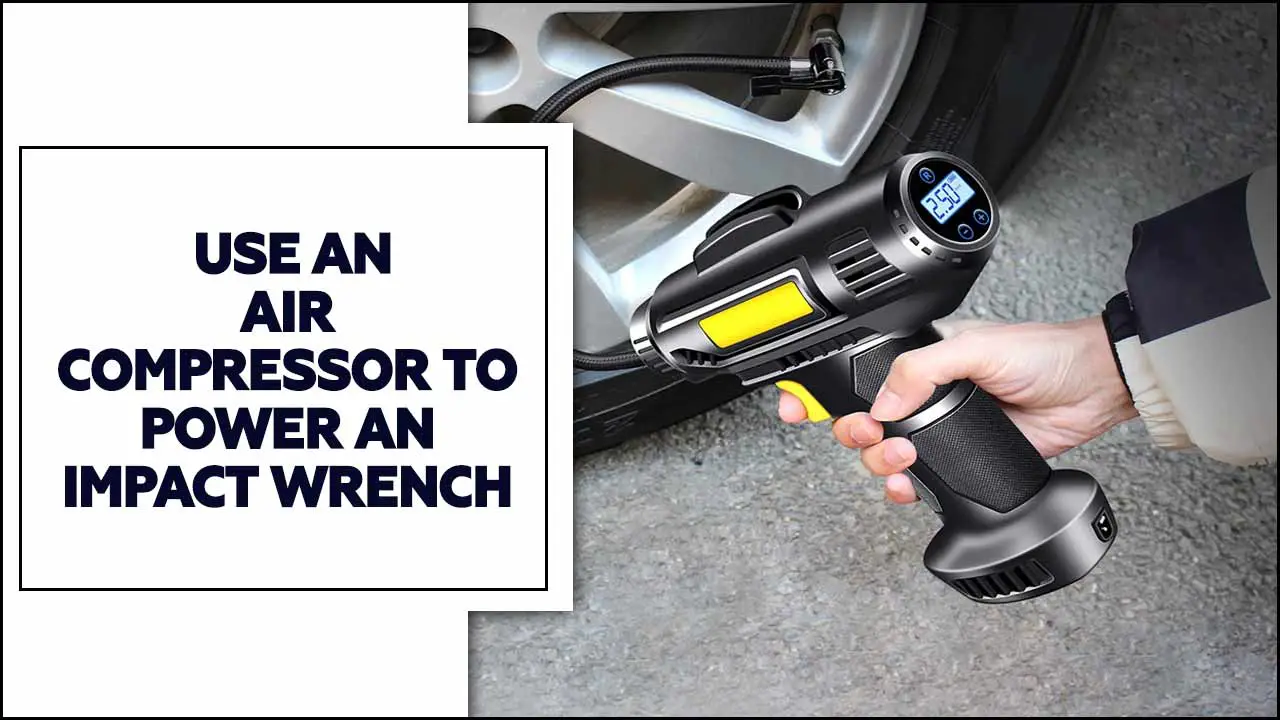
What Is An Air Compressor?
An air compressor is a device designed to convert power into potential energy stored in compressed air. It works by utilizing a motor or engine to increase the speed of a piston, which in turn compresses the air inside an air tank.
This compressed air can be used for various applications, such as powering pneumatic tools or inflating tires. The air tank allows for extended periods of air supply without constant operation. The maximum or maximum pressure represents the highest level of compressed air that the air compressor can generate.
Simple Steps On How To Use An Air Compressor To Power An Impact Wrench
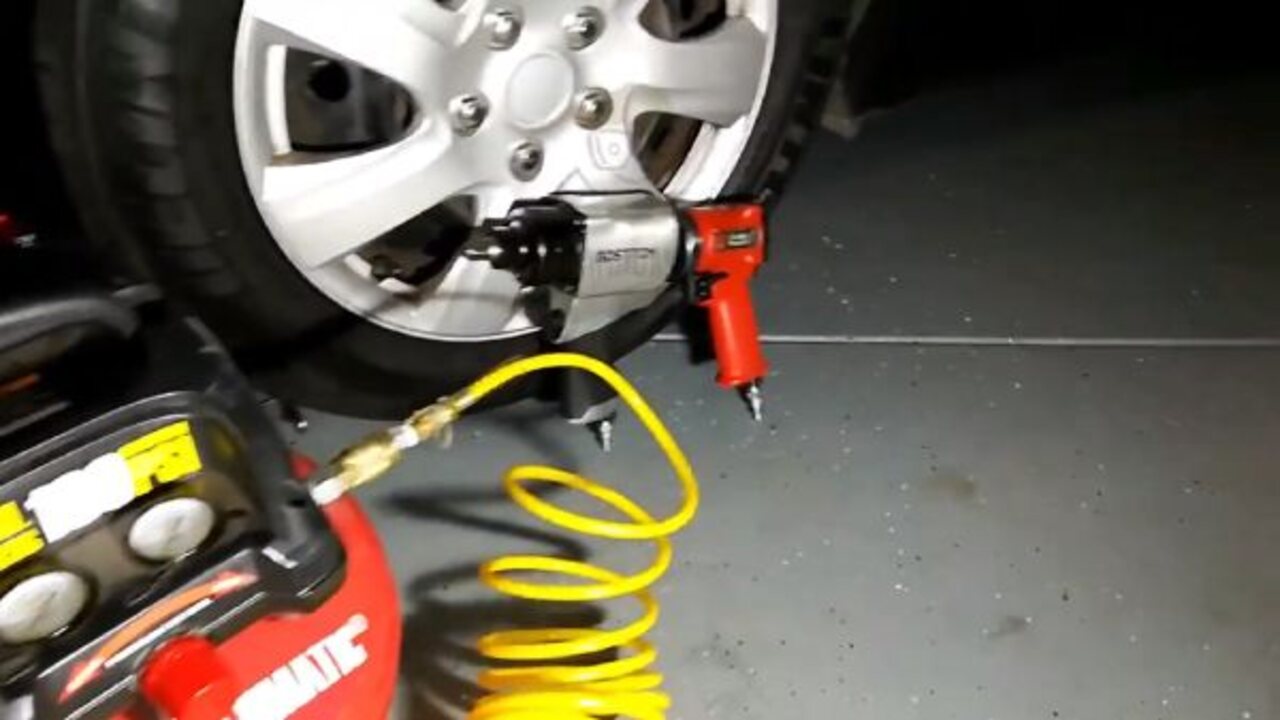
To properly use an air compressor for your impact wrench, ensure it has adequate airflow and horsepower. Control air pressure with a regulator valve and connect your compressor to your wrench using a quick-connect fitting.
Before use, wait for proper pressure buildup and regularly lubricate your tool with an oiler for optimal performance. Don’t neglect maintenance; clean filters, replace oil as needed, and lubricate mechanisms to keep your compressor running smoothly. Here are the steps to use an air compressor to power an impact wrench.
Setting Up Your Air Compressor For Your Impact Wrench
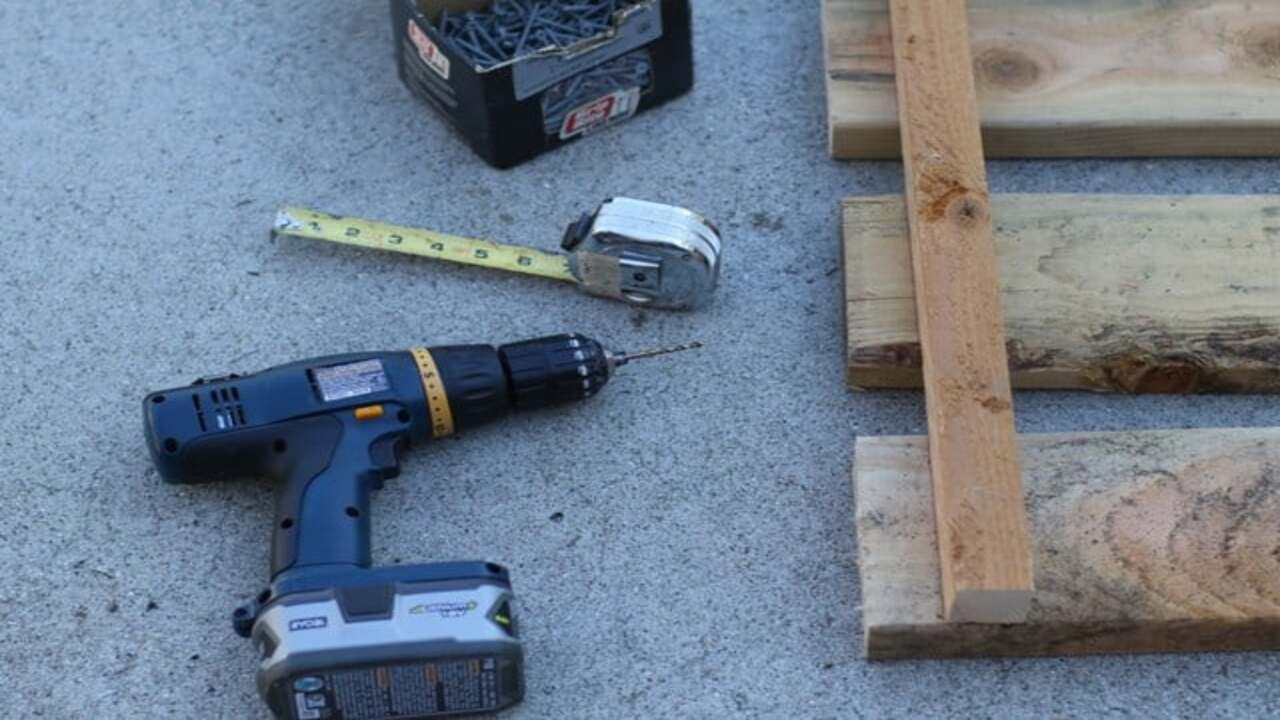
To effectively utilize an air compressor to power an impact wrench, setting up your equipment properly is crucial. Begin by ensuring that your air compressor is in good working condition and has sufficient pressure and volume capacity to support the impact wrench. Connect the compressor to a reliable power source and place it on a stable surface. Attach the appropriate air hose to the compressor and secure it tightly.
Then, connect the other end of the hose to the impact wrench, ensuring a secure and proper fit. Finally, check for any leaks or irregularities before operating the equipment. Following these steps, you can confidently use your air compressor to power your impact wrench and easily tackle various tasks.
Attaching The Hose To The Wrench
Always follow manufacturer instructions and safety guidelines for attaching a hose to an air impact wrench. While choosing a hose for your impact wrench and compressor, ensure it is compatible with both.
Attach it securely with the help of a quick-connect fitting without any air leakage. Adjusting the compressor’s air pressure depending on your impact wrench’s requirement is necessary for smooth functioning.
Connecting The Valve To The Hose
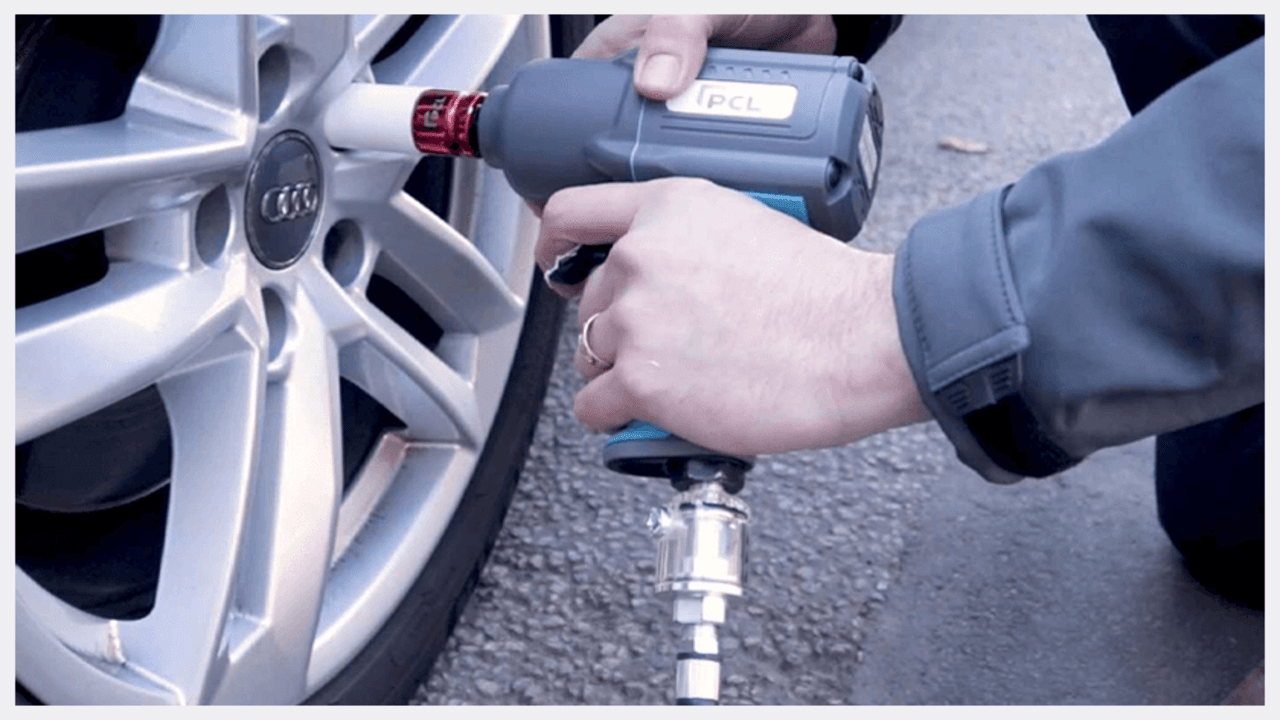
To successfully utilize an air compressor to provide the necessary power for an impact wrench, properly connecting the valve to the hose is crucial. This simple yet essential step ensures a seamless compressed air flow to the tool. Begin by ensuring the valve and hose are clean and free from debris. Attach the valve securely to the hose, ensuring it is tightly fastened to prevent air leakage.
Once connected, double-check the connection to ensure it is secure and ready for use. Properly connecting the valve to the hose ensures optimal performance and efficiency when using an air compressor to power an impact wrench.
Adjusting The Pressure With The Regulator
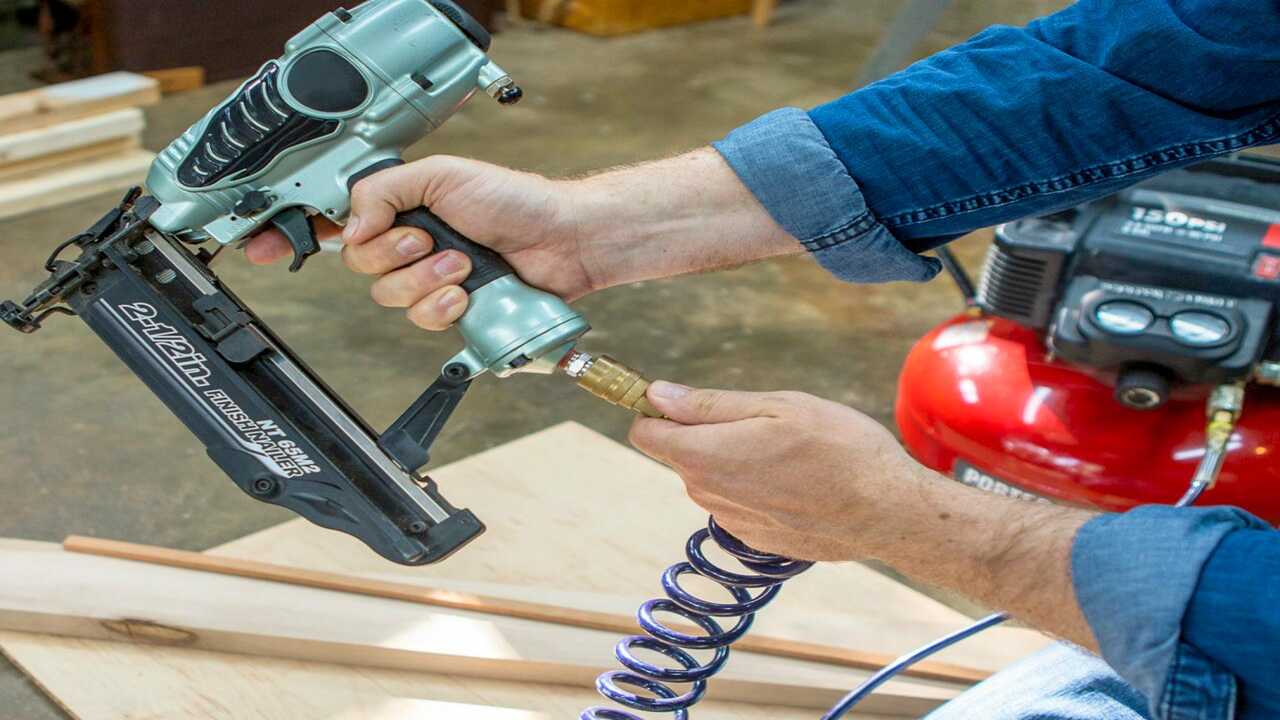
When adjusting the pressure of your air compressor for an impact wrench, always follow the manufacturer’s instructions and ensure proper usage. Use the regulator on your air compressor to adjust the pressure output according to the impact wrench requirements to avoid any damage or incomplete tasks.
Using caution and following safety guidelines is essential while working with pneumatic tools such as air compressors and impact wrenches.
Choosing The Right Air Compressor For Your Wrench
Choosing the best air compressor for an impact wrench involves considering several factors, like tank size, horsepower, and CFM rating. With a larger tank and high horsepower motor, you can easily power through heavy-duty tasks like removing lug nuts or rusted bolts. Always check the air compressor’s PSI rating and choose a model with enough airflow to power your pneumatic impact wrench safely.
CFM Requirements For Impact Wrenches
When choosing an air compressor for your impact wrench, it’s important to consider the required airflow measured by CFM (cubic feet per minute). Your impact wrench needs at least 4-5 CFM of compressed air to work properly. Choose a compressor with sufficient airflow to ensure optimal performance and longevity of your air tool. Tank size, portability and noise level are also essential considerations.
PSI Requirements For Impact Wrenches
To effectively power an impact wrench using an air compressor, choose one with a high enough PSI rating. Typically, the minimum requirement for most impact wrenches is 90 PSI.
Therefore, selecting an air compressor with a higher PSI rating than your wrench requires is essential for optimal performance and safety. Alongside this, checking the CFM rating of your air compressor is equally significant since it determines how quickly the compressor can recharge after use.
Gallon Capacity Needed For Impact Wrenches
The gallon capacity of an air compressor is also an important factor to consider when choosing one for your impact wrench. Generally, the larger and more frequent your tasks, the larger the tank size you need. For light-duty applications, a 1-3 gallon tank may suffice.
However, a 6-gallon tank or higher is recommended for heavy-duty tasks like automotive repair. Make sure you choose the right gallon capacity that suits your needs to ensure the efficient operation of your impact wrench.
Maintaining Your Air Compressor And Impact Wrench
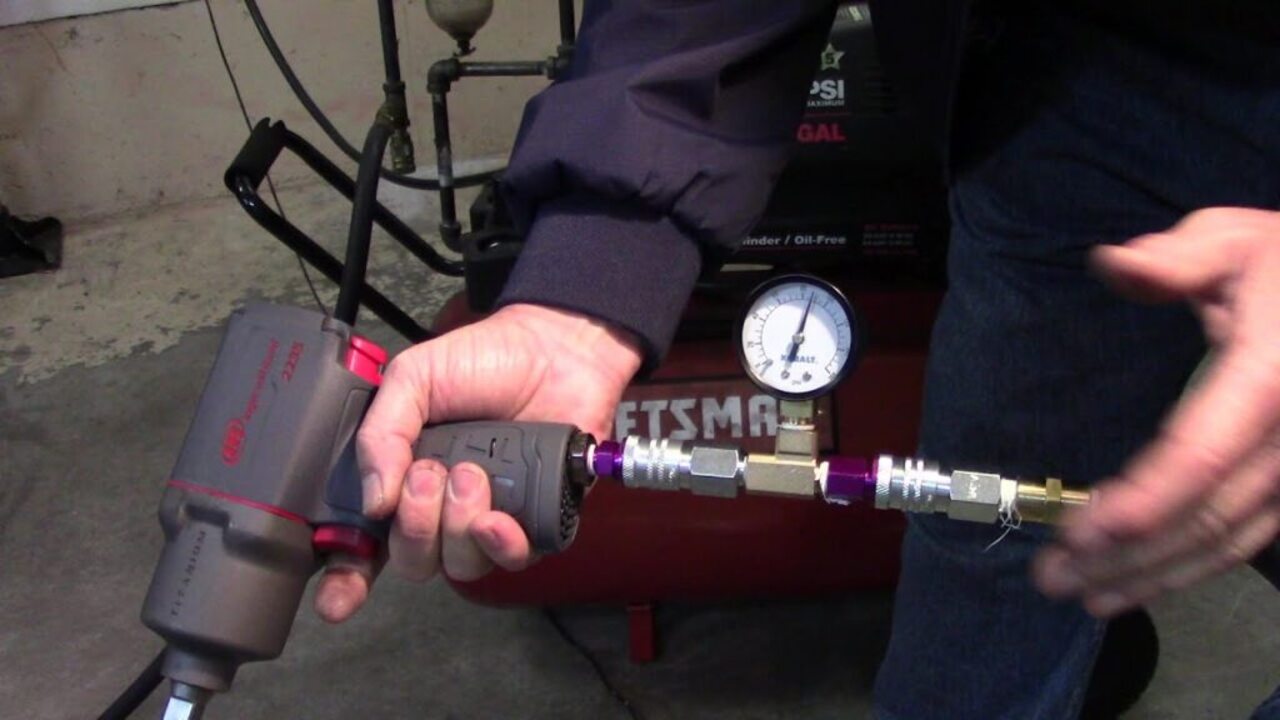
Keeping your air compressor and impact wrench in good condition is essential for longevity. Regularly checking and maintaining these tools involves cleaning the air filter to ensure proper airflow and draining moisture from the tank to prevent rust and damage.
High-quality oil for lubrication can increase their lifespan while replacing parts as needed will help avoid further wear and tear. Adjusting the compressor’s pressure according to your wrench’s requirements is crucial for avoiding damage or injury. Make sure always to follow the manufacturer’s instructions for both tools.
Cleaning The Air Filter Regularly
Keeping the air filter of your air compressor clean is crucial for its proper functioning. A clogged air filter can reduce airflow, affecting the pressure output and damaging your impact wrench.
To avoid this, clean your air filter regularly by removing it from the compressor, blowing off any debris or dust, and washing it with soap and water if needed. Make sure to dry it before reattaching it to your compressor. You can ensure long-term usage and efficient performance by properly maintaining your air compressor and impact wrench.
Checking And Replacing The Oil As Needed
Proper maintenance is essential for keeping your air tool operating at its best. To ensure optimal performance of your impact wrench and compressor, it’s important to regularly check and replace the oil with a high-quality product recommended by the manufacturer.
Lubricating the impact wrench mechanism is also critical for reducing wear and tear on parts. Be sure not to overfill or underfill with oil to avoid damage or malfunctions. By following these tips for maintaining your equipment, you can save money in the long run by preventing costly repairs or replacements.
Lubricating The Impact Wrench Mechanism
Maintaining a pneumatic impact wrench requires regular lubrication of its mechanism with a high-quality lubricant. Following manufacturer instructions ensures proper application that prevents over-lubrication.
Doing so would prevent attracting dust and debris that could damage the wrench. Opting for regular air compressors and pneumatic or air impact wrench maintenance saves you money and time in the long run.
Common Issues When Using An Air Compressor With An Impact Wrench
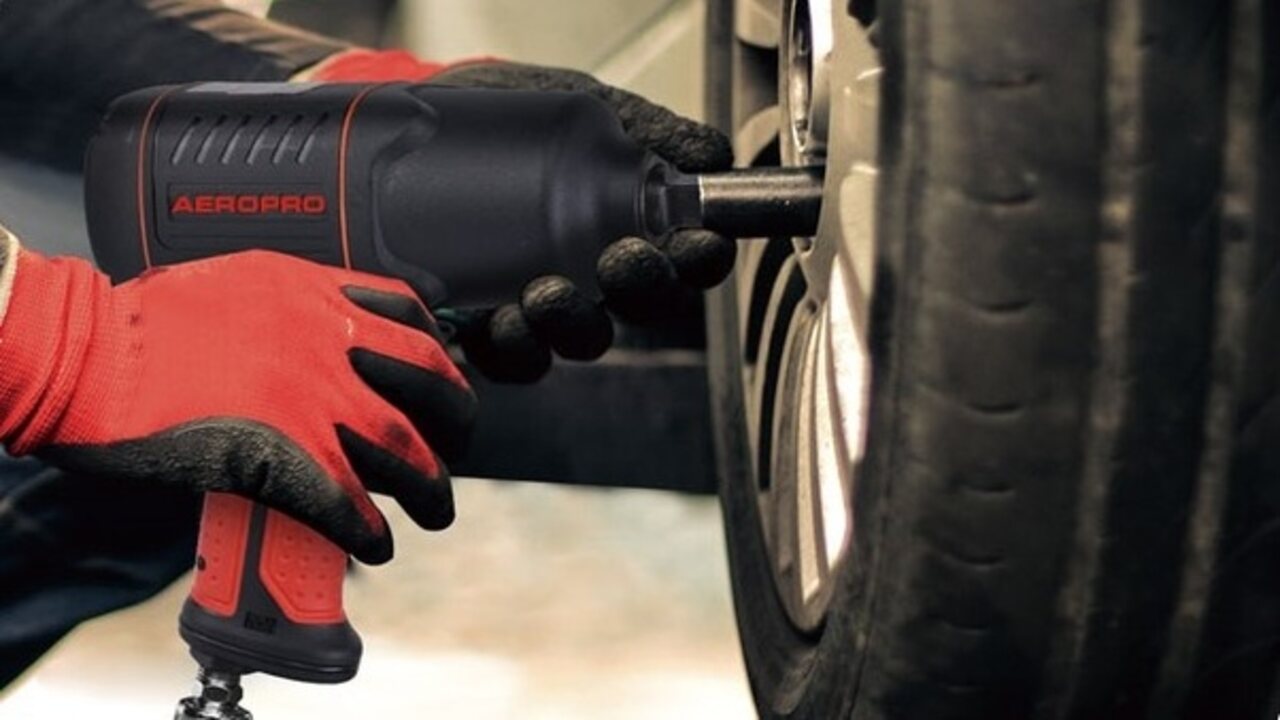
Several challenges may arise when using an air compressor to power an impact wrench. Here are some things to remember to avoid malfunctions or equipment damage. Ensure you have enough airflow and pressure from your compressor to power your impact wrench effectively.
Check for leaks or blockages in your air hose before getting started. Always regulate your air pressure with a valve or regulator to prevent harm to the tool. Lastly, proper equipment maintenance is essential; change oils regularly and replace filters as needed.
Hose Length And Diameter Issues
To get the most out of your air impact wrench, it’s important to pay attention to the size and length of your air hose. Using a longer hose or a smaller diameter hose than required can cause pressure drops, restrict airflow, and reduce performance.
So make sure you choose the right size and length of hose for your specific requirements while regularly checking for leaks or damage.
Inconsistent Air Pressure Issues
To maintain consistent airflow while using an impact wrench, ensure your air compressor is appropriately sized for both the tool and the task. Regular maintenance is essential to preventing inconsistent air pressure issues, including checking for leaks in your system.
Proper ventilation and cooling will also help keep the unit running smoothly. Consider investing in a larger tank or upgrading your compressor if you frequently complete heavy-duty tasks. Safety valves and pressure gauges can help prevent issues from arising.
What Are The Best Brands Of Air Compressors?
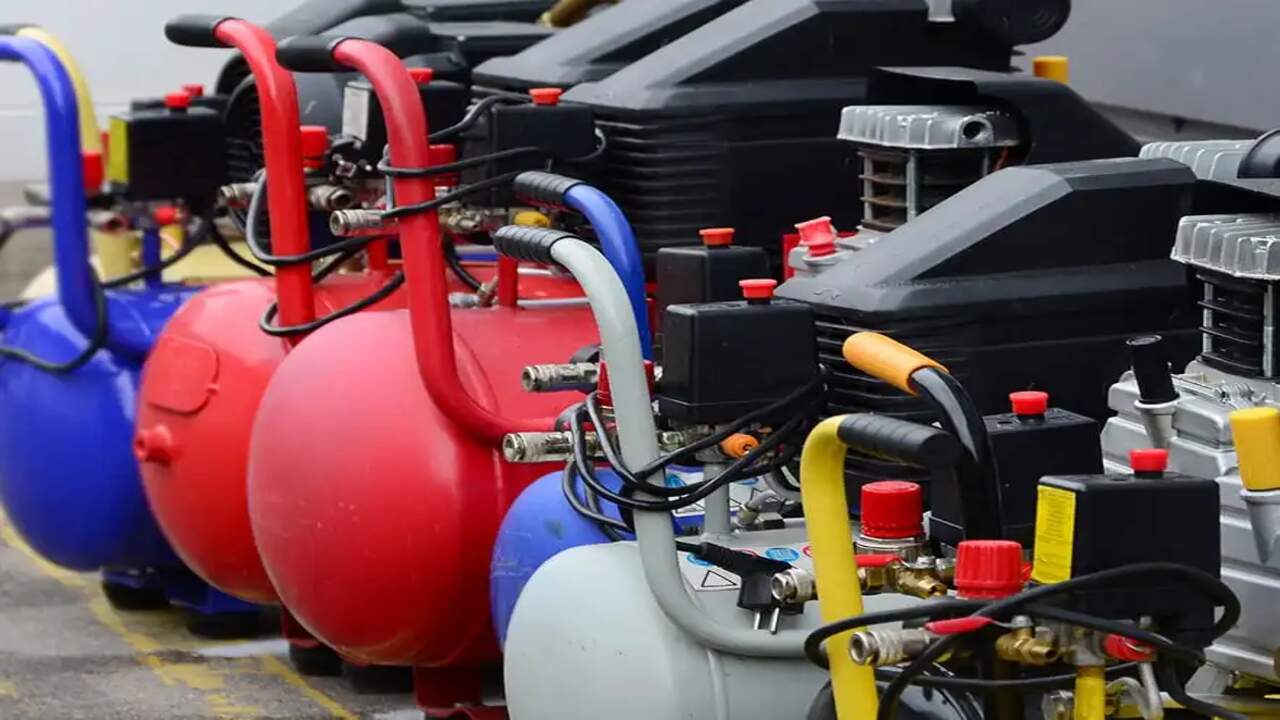
When choosing the best brands of air compressors, it is important to consider various factors, including speed, insufficient pressure, air requirements, pressure regulator, and air volume. One highly recommended brand is Metabo HPT 8-gallon Portable Air Compressor EC1315SM Compressors, known for their exceptional speed and efficient performance.
Their compressors are equipped with advanced pressure regulators, ensuring the pressure remains consistent and sufficient for various applications. Ridgid 18V Digital Inflator R87044 Compressors is another top brand renowned for meeting high air volume demands while maintaining optimal efficiency. Considering these factors, you can select the best air compressor brand.
How Much Air Do You Need To Run An Impact Wrench?
Regarding operating an impact wrench, the amount of air required is directly related to the speed and power of the tool. Impact wrenches are commonly powered by compressed air; the air volume needed depends on the specific model and task.
As a rule of thumb, higher speed and torque applications typically require a higher air volume to deliver sufficient power. However, it is important to note that too much air can lead to waste and inefficiency. Additionally, it is crucial to consider the risk of explosive atmospheres when working with power tools in certain environments, ensuring proper safety measures are in place.
Conclusion
Use an air compressor to power an impact wrench is a great way to tackle those tough jobs that require a lot of torque. However, correctly choosing the right air compressor and setting it up is key to achieving the desired result.
It’s important to understand the CFM requirements, PSI requirements, and gallon capacity needed for your impact wrench. Once you have the right tools, setting up your air compressor is simple.
Don’t forget to maintain your equipment by cleaning the air filter regularly, checking and replacing oil as needed, and lubricating the impact wrench mechanism. Always check the manufacturer’s instructions for both tools and wear appropriate safety gear such as eye and ear protection.
Frequently Asked Questions
[rank_math_rich_snippet id=”s-cbc29dec-86d8-42ea-8c71-d318c19fd506″]

I am passionate about home engineering. I specialize in designing, installing, and maintaining heating, ventilation, and air conditioning systems. My goal is to help people stay comfortable in their homes all year long.
